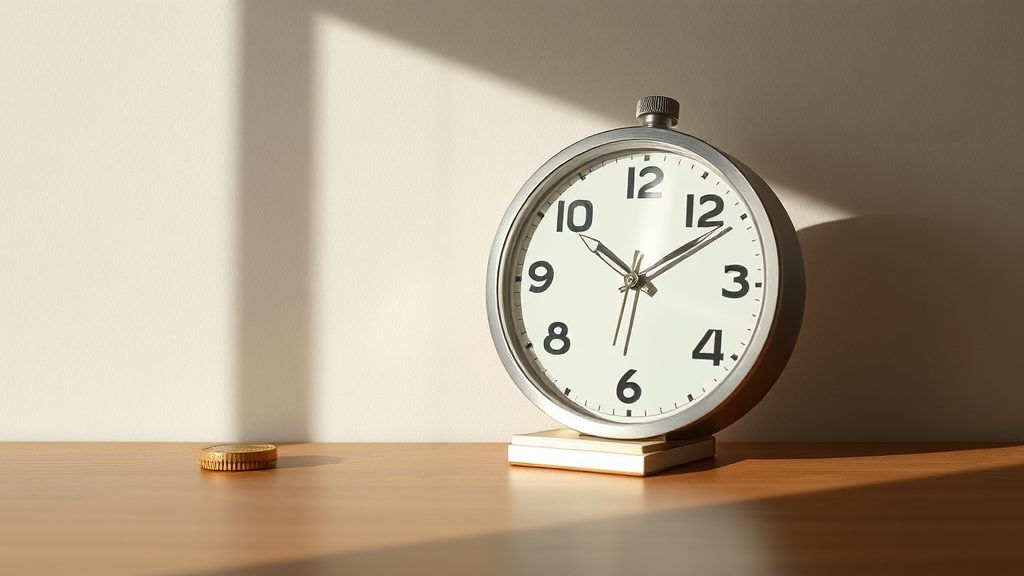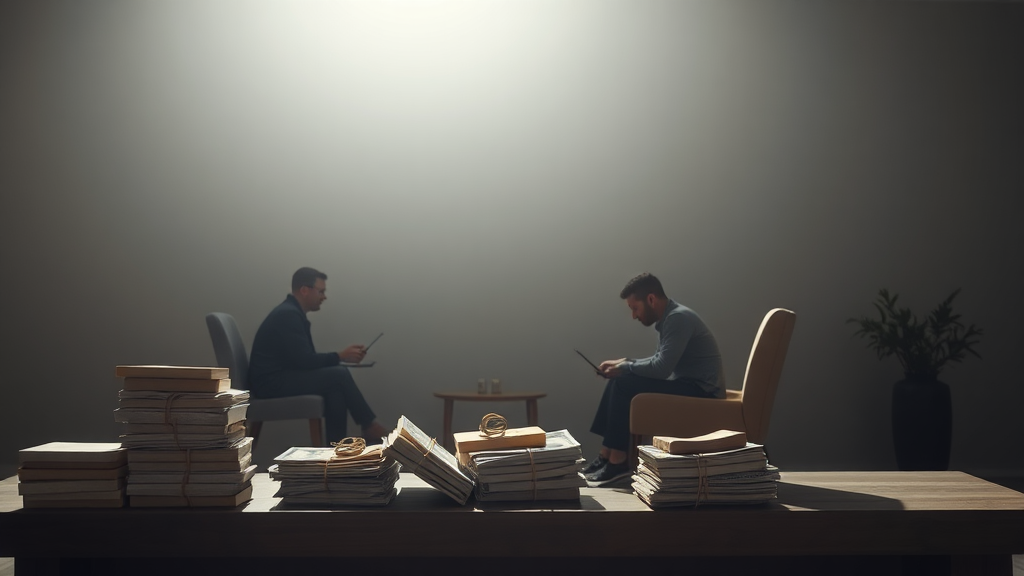Bankruptcy: Second Time
What it Means to Go Bankrupt Again
bankruptcy, second time
Second-time bankruptcy in Canada includes additional legal implications and stricter terms compared to the first time. Eligibility criteria are stringent, requiring specific documentation. The impact on credit score is more severe, and long-term financial health can be significantly affected. Strategies for recovery focus on stringent budgeting, debt management, and professional guidance. Real-life cases illustrate the challenges and highlight best practices for financial stability.

Article: Second Time Bankruptcy
Understanding Second Time Bankruptcy
Definition of second-time bankruptcy in Canada., Legal implications and differences from first-time bankruptcy., Statistics on second-time bankruptcies in Canada.
Second-time bankruptcy in Canada refers to the process when an individual files for bankruptcy for the second time. Unlike the first-time bankruptcy, a second-time bankruptcy typically comes with stricter conditions. For instance, the discharge period—when you're officially released from your bankruptcy obligations—extends up to 24 months if there are no objections, or up to 36 months if there are. This increased period aims to ensure that debtors take more time to rectify their financial habits and plan for a more stable future.
Legally, filing for the second time brings about more scrutiny under Canadian bankruptcy laws. Trustees, who administer the bankruptcy, will conduct a more thorough examination of your financial history and current situation. The process also involves mandatory credit counseling sessions to educate you on money management skills and prevent future insolvency. Another key difference is that your assets, which might not have been at risk during your first bankruptcy, could be liquidated to repay creditors this time around. So yes, it’s more stringent but designed to help you regain financial stability effectively.
When it comes to the numbers, statistics show that second-time bankruptcies in Canada are notably less common than first-time filings, but they do happen. Data indicates that about 15% of filings are individuals declaring bankruptcy for the second time. For example, if 100 people file for bankruptcy, around 15 would potentially be filing for the second time. This shows that while not as frequent, second-time bankruptcies are a critical area that underscores the importance of effective debt management and financial education to prevent recurrence.
Eligibility and Process
Qualification criteria for second-time bankruptcy., Steps involved in filing for a second bankruptcy., Documentation and requirements needed.
If you're considering a second bankruptcy in Canada, specific eligibility criteria must be met. Firstly, individuals must have already completed their obligations from the first bankruptcy, including attending credit counseling sessions and receiving their discharge. Secondly, evidence of insolvency must be presented; this means demonstrating an inability to pay off debts as they come due. The court will closely examine your financial situation to ensure re-filing is justified. For instance, if John Doe filed for bankruptcy five years ago and is once again unable to manage his debt despite attempts to restructure his finances, he may qualify.
Filing for a second bankruptcy involves several key steps. Initially, you’ll need to consult with a Licensed Insolvency Trustee (LIT) who will assess your financial situation and confirm whether a second bankruptcy is the best route. Next, you will need to gather all relevant documentation, such as income statements, a list of assets and liabilities, and previous bankruptcy paperwork. The LIT will file the necessary forms with the Office of the Superintendent of Bankruptcy (OSB). Once the filing is complete, you’ll have to attend mandatory credit counseling sessions to help manage your finances better this time around. Expect stricter conditions and possibly a longer period before discharge compared to your first bankruptcy.
As for documentation and requirements, make sure you have the following prepared: detailed income reports, tax returns for the past few years, bank statements, a comprehensive list of all debts, and records of your assets and liabilities. Additionally, obtain any documentation related to your first bankruptcy, including discharge papers and proof of completed credit counseling sessions. Having these documents organized and readily available will streamline the process and prove your genuine need for a second bankruptcy. For example, Jane Smith meticulously gathered her financial documents and was well-prepared for a smooth second bankruptcy filing, significantly easing her stress through this challenging period.
Elimiate up to 80% of Your Debt
High cost of gas, high cost of groceries, high lending rates, low salary - being in debt is not your fault! See if you qualify for government debt programs and get out of debt today!
Consequences and Impact
Long-term effects on credit score and financial standing., Legal and personal consequences of a second bankruptcy., Comparing the impact of first-time vs. second-time bankruptcy.
Experiencing bankruptcy in Canada can have profound long-term effects on your credit score and financial standing. The first bankruptcy may remain on your credit report for up to seven years, making it challenging to secure loans or credit at favorable rates. For instance, if you had a credit score of 700 before filing, you might see it plummet significantly, potentially below 500. This dip can impact your ability to rent an apartment, buy a car, or even get a job in some sectors. Recovery is possible, but it requires patience and disciplined financial habits to rebuild your creditworthiness.
Filing for a second bankruptcy in Canada brings more severe legal and personal consequences compared to the first one. Legally, the process is more stringent, and your assets are under greater scrutiny. You may also have to wait 24 months (as opposed to 9 months for a first bankruptcy) before being eligible for discharge, making it a longer and more grueling experience. On a personal level, the stress and stigma associated with a second bankruptcy can strain relationships and impact mental health. You might find lenders even more reluctant to extend credit, making it harder to recover financially.
Comparing the impact of first-time versus second-time bankruptcy reveals stark differences. While the first bankruptcy is generally seen as a fresh start, offering an opportunity to reset and learn from past mistakes, a second bankruptcy is viewed much more harshly. Creditors see it as a pattern of financial mismanagement, making trust and credit approval harder to come by. If the first bankruptcy is akin to stumbling, the second feels like falling into a deep pit that requires considerable effort and time to climb out of. Essentially, while the first can be a hiccup in your financial journey, the second can set you back much further, complicating your financial recovery.

Navigating a second time bankruptcy effectively.
Recovery Strategies
Financial planning and budgeting post-bankruptcy., Utilizing debt management and consolidation services., Professional advice for rebuilding financial stability.
Let's talk about financial planning and budgeting post-bankruptcy. It’s like resetting your financial GPS after a detour—ensuring you have a clear route to avoid any pitfalls. Start by jotting down all your monthly incomes and expenses to get a realistic picture of your cash flow. Use this info to create a budget that prioritizes necessities, savings, and a bit of fun - even rice cakes can’t keep you satisfied forever! Automate your savings to ensure you're consistently putting money aside and monitor your spending to stick to your budget. Think of it like meal-prepping for your finances—planning ahead makes it easier to stay on track.
For those who find themselves juggling multiple debts, debt management and consolidation services can be lifesavers. Say you’re dealing with a handful of credit card debts with varying interest rates; consolidating these into a single, more manageable payment can save you stress and money on interest. Credit counseling services can negotiate with creditors to lower interest rates and monthly payments. It’s a bit like hiring a personal trainer for your debt—someone to guide you and keep you accountable while you work towards financial stability. Just make sure you pick a reputable service to partner with.
Finally, don’t underestimate the power of professional advice for rebuilding financial stability. Think of financial advisors as your personal finance coaches. They can provide tailored strategies to improve your credit score, create a robust savings plan, and invest wisely. Just like you wouldn’t attempt a complicated DIY car repair without some expert help, navigating post-bankruptcy recovery becomes a lot smoother with professional guidance. Take advantage of free initial consultations offered by many advisors to find the right fit for your needs. It’s an investment in your future, helping you regain control and confidence in your financial life.
Real-World Examples and Case Studies
Case studies of individuals who have undergone second-time bankruptcy., Lessons learned and best practices from real-life examples., Expert opinions on avoiding future financial pitfalls.
For many Canadians, a second-time bankruptcy can feel like déjà vu, but it’s a reality that some face. Take the case of John from Toronto. John first declared bankruptcy in his late twenties due to mounting credit card debts and student loans. Determined to start fresh, he tried managing his finances differently but found himself back in the same spot a decade later after a business venture failed. Through his experience, John realized the importance of financial planning and the need for a robust emergency fund—a lesson he overlooked the first time around.
Real-life examples like John’s highlight several lessons learned and best practices for avoiding future financial pitfalls. One standout lesson is the importance of continuous financial education. Many individuals fall into the trap of feeling relieved post-bankruptcy without adequately addressing the habits and misconceptions about money that got them there in the first place. Another critical takeaway is the necessity of having a diversified income stream and a well-thought-out contingency plan. Focus on creating a budget that accommodates savings for unexpected expenses, thereby reducing the risk of falling back into financial distress.
Experts agree that avoiding future financial pitfalls involves a mix of proactive strategies and mindset shifts. Angela Warren, a financial advisor in Vancouver, emphasizes the importance of a realistic and sustainable budget that prioritizes both debt repayment and savings. It’s equally crucial to build a financial support system, whether through professional advisors or peer support groups, to keep you accountable and well-informed. By adopting these practices, Canadians can significantly improve their financial resilience and reduce the likelihood of finding themselves facing bankruptcy again.
References
| Title, Source |
|---|
| Second Time Bankruptcy: What You Need to Know, Canadian Insolvency Trustee |
| Impact of Second Bankruptcy on Credit Score, Equifax Canada |
| Second-Time Bankruptcy Statistics in Canada, Government of Canada |
| Financial Recovery Post-Bankruptcy, Financial Consumer Agency of Canada |
| Case Studies of Second-Time Bankruptcies, Consumer Financial Education |
This article references information from the above sources.
Eliminate up to 80% of Your Debt
High cost of gas, high cost of groceries, high lending rates, low salary - being in debt is not your fault! See if you qualify for government debt programs and get out of debt today!